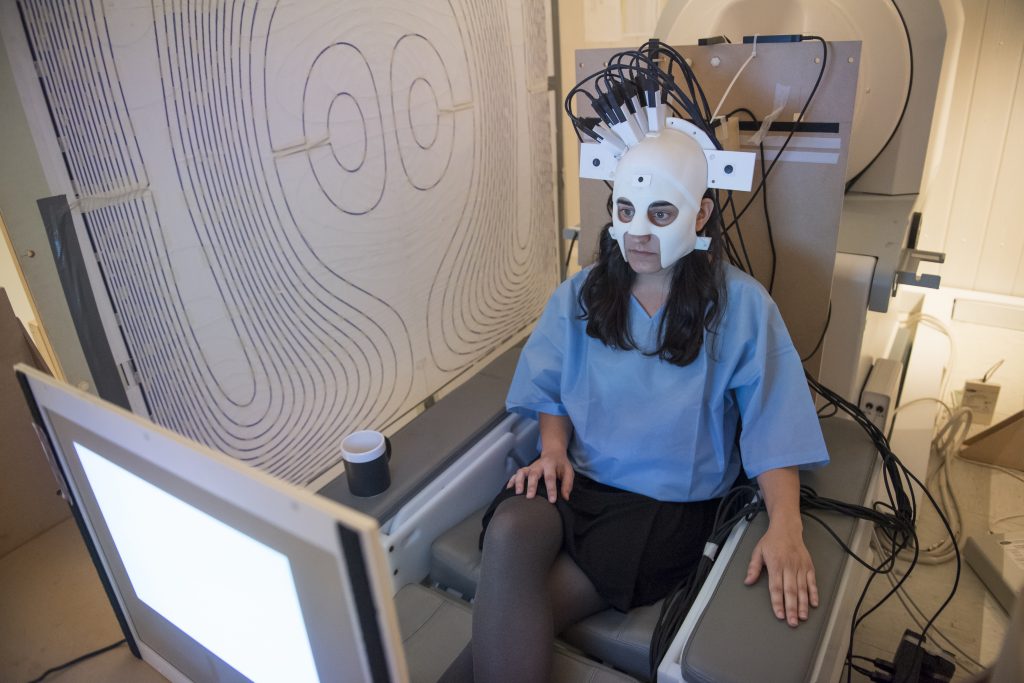A £1.6 million collaborative project between scientists at the University of Nottingham and University College London (UCL) is looking to improve the way we map the human brain. Focusing on the development of magnetoencephalography (MEG), researchers have 3D printed a prototype helmet that may yield quadruple the sensitivity of current MEG devices.
Reading at room temperature
In MEG, sensors capable of detecting the most sensitive magnetic fields emitted by the brain are added close to the scalp. Traditionally, these sensors would require cryogenic cooling (down to – 269 degrees) for operation. Nottingham and UCL’s MEG device uses the newly invented SERF sensors meaning that they can operate at room temperature and be placed directly on the skin.

Dr. Matthew Brookes from the University of Nottingham’s School of Physics and Astronomy explains, “Quantum technology has allowed the development of a new type of optical sensor which has the sensitivity to detect the weak magnetic fields from the brain. […] Our calculations show that by getting the sensors closer to the head we can quadruple the sensitivity of the field detection.”
“This will revolutionise the kind of effect that we are able to detect from the human brain.”
Accuracy by design
The new MEG helmet has been in development since 2012. London design and model making agency Chalk Studios has aided in the design and fabrication of the device, known internally as a “headcast”. According to the agency, the headcast bypasses the main caveat of other MEG devices by affixing as close to the head as possible, and keeping sensors stationary. “Our headcasts” they comment, “have significantly improved the accuracy of the signal measure by the MEG machine, reducing absolute and relative errors to between 1-2mm, which is a 5-10 fold improvement from standard practice.”

Quadruple sensitivity
By using 3D printing the headcasts could effectively be made on a case-by-case basis, meaning researchers can acquire the perfect fit for every patient. Professor Richard Bowtell, grant co-applicant and Director of the Sir Peter Mansfield Imaging Centre in Nottingham, comments, “Because MEG systems are essentially ‘one size fits all’, sensitivity is limited for subjects with smaller heads such as infants since their heads are further from the detectors.”
“Room temperature quantum sensors can be mounted directly on the scalp of any subject. This will give us a projected four-fold increase in sensitivity for adults, but the sensitivity could potentially be up to a 15 or 20 fold increase for children or babies.”

Revealing secrets of the human brain
Eventually, the hope is that the UCL/Nottingham made MEG headcast could be used to help neuroscientists understand conditions like drug resistant epilepsy and schizophrenia.
3D printing has also effectively been used to facilitate a number of behavioural studies, revealing secrets about the human brain from some of the most unlikely places.
A paper from Nottingham and UCL reporting on the first stage of its MEG device research has been published in the journal NeuroImage. Titled A new generation of magnetoencephalography: Room temperature measurements using optically-pumped magnetometers, the publication is co-authored by Elena Boto, Sofie S. Meyer, Vishal Shah, Orang Alem, Svenja Knappe, Peter Kruger, T. Mark Fromhold, Mark Lim, Paul M. Glover, Peter G. Morris, Richard Bowtell, Gareth R. Barnes and Matthew J. Brookes.
Learn more about the latest studies using 3D printing for research, subscribe, like and follow here. You can also get involved with 3D printing events near you.
Featured image shows a 3D printed prototype MEG headcast device in use. Photo via the University of Nottingham



